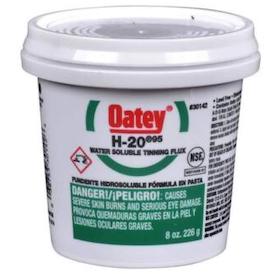
-----
Hot tin dipping on cast iron
Could you give me information on using tin for plating cast iron such us a meat chopper? What are the benefits of tin on cast iron? Is there a norm for tin plating for sanitary uses on cast iron?
Regards,
ANDRES F. MEJIA- Medellin, Colombia
2002
I have never hot dipped cast iron, so cannot speak from first hand experience, but I can offer some thoughts. Firstly, hot dipping will give a much thicker coating than electrolytic coatings and be much faster. Secondly, it will form an intermetallic that is probably beneficial to adhesion. Thirdly, since tin melts at only 232° C, you don't need much energy to melt it! Fourthly, you probably stand a better chance of getting a better coating with hot dipping as electroplating will be susceptible to any pores in the cast iron; at least molten tin can flow into these crevices, whilst electrodeposition will not be as effective at penetrating them. Saying all this, I am not convinced of the efficacy of using cast iron to make a meat chopper, where you need a sharp edge; cast iron doesn't form a very sharp edge and is brittle.

Trevor Crichton
R&D practical scientist
Chesham, Bucks, UK
2002
What about hot tinned cast iron sausage stuffers. is there a risk of tin flaking, leeching into product, i.e. sanitation issues
Michael Foremanchef - Louisville, Kentucky
December 21, 2008
December 23, 2008
Hi, Michael. I don't know what tin application process you are envisioning, so I don't know the likelihood of it chipping. But to my knowledge tin is one of the few non-toxic food-safe metals.
Regards,

Ted Mooney, P.E.
Striving to live Aloha
finishing.com - Pine Beach, New Jersey
Ted is available for instant help
or longer-term assistance.
Cast iron has a lot of history of use in meat grinders. It is used in making the housing of the grinder. This housing supports a steel auger, steel blades, steel grinder plate. Historically, all but the blades and plate are tinned. I have several of these types of grinders - they are antiques but they work as well as new. Newer grinders of the same design use a food grade coating (I assume epoxy of some sort). For Reference Link: www.chop-rite.com/Screw%20Down%20Meat%20Chopper.htm. Note that I am not affiliated with this company in any way.
If hot tinning, one would use food grade tin (available on-line and I am sure via lots of sources). This type of tin is (I believe) 99.9%+ pure tin. No need to worry about tin and detrimental food contamination.
- Palmyra, Virginia
March 20, 2009
I have an antique cherry stoner which needs to be re-tinned, and I have some 99.9% pure tin in bars. Would it work to just melt the tin and pour it over the cast iron pieces?
Pat Gordon- Glenrock, Wyoming, USA
July 5, 2010
Hi, Pat.
We have a number of threads about re-tinning copper cookware, in which case the copper must be properly fluxed before the tin is wiped on. Not surprisingly, it is implied that a certain amount of talent and experience is required.
Regarding cast iron, I do not know, but would assume that a flux is required (most metals rust, tarnish, or corrode and you can't get a proper metal-to-metal bond by depositing metal onto a tarnished oxide surface). Further, it may be necessary to dip the item in the molten tin although I can't say that tin wiping won't work.
Regards,

Ted Mooney, P.E.
Striving to live Aloha
finishing.com - Pine Beach, New Jersey
Ted is available for instant help
or longer-term assistance.
August 2011
I see a number of questions on tinning. I'm considering buying an electric tomato squeezer for canning tomatoes. Most have the 'worm' as cast iron with epoxy coating. I've got to believe that will come off with high heat and friction as the boiled tomatoes go thru. One model has 'double hot tinning' on the work. I'm thinking, based on all these comments, that is the way to go. Based on your expertise, does that sound appropriate?
Joseph Calandra- Southington, Connecticut USA
August 3, 2011
Q, A, or Comment on THIS thread -or- Start a NEW Thread
